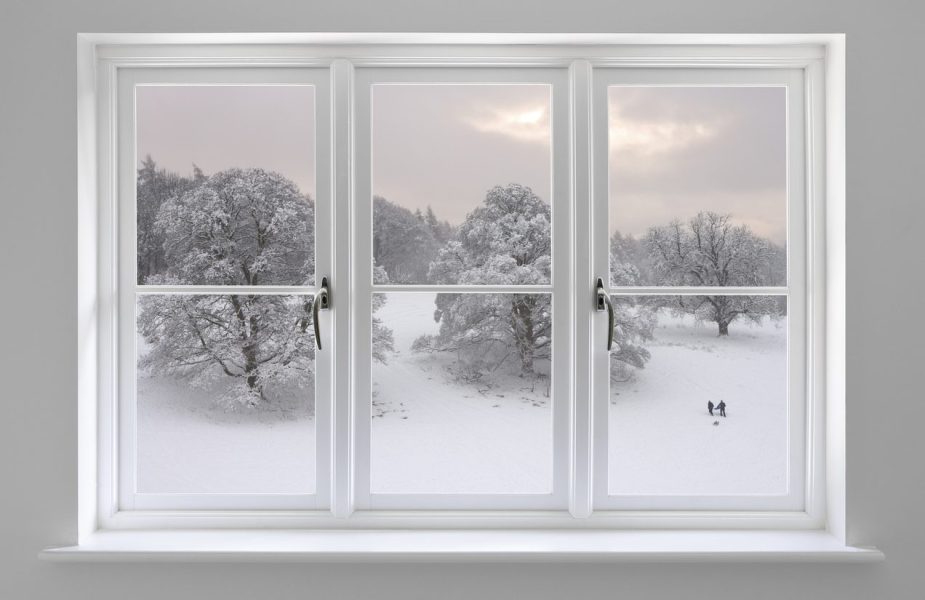When you’re enjoying the warm summer sun, it can be easy to forget how cold your home can be during the winter months, especially if colder air is getting in through your windows. Your instinctive reaction when it’s cold in your home would probably be to turn the heating on, but relying on your heating alone can lead to costly energy bills, even more so when warm air is escaping, and cool air is coming in.
The first step to making your home warmer is to stop that cold air from getting in and improving the overall heat retention, and your windows play an essential role in this. We will be looking at the importance of energy efficient windows and how to prevent cold air getting through them in this article.
Why are windows so important?
Alongside other elements like your roof, walls, floor, and doors, windows are a key part of your property’s thermal envelope. It would be no use having large areas of your house insulated if your windows are not up to par. On top of this, windows are a much quicker, easier, and more cost-effective way to renovate and improve the energy efficiency within your home.
Do you need to replace your windows to stop cold air getting through?
No, not necessarily, if your windows are very old and not really worth repairing then it would be advisable to replace them with new ones. However, there are other much simpler ways for you to stop cold air coming through windows and making your home feel cold.
Re-sealing your windows
Over time, the sealing or caulking around your windows can start to break down. The result of this is small gaps or breaks around the windows which allow the cold air to get in. Not only that but these gaps can also leave room for moisture to come through into your home, leading to more concern and further damage.
Your windows can be easily resealed with some caulk added along the joints. This will work to seal off any gaps and prevent cold air from getting through, it is best not to attempt to do this yourself if you are not experienced, as the old caulk will need to be removed first.
Using weather strips
Weather strips can be used as a temporary alternative to caulk re-sealing. They are self-adhesive strips that can be applied to the inside of your window frame to stop cold air getting through any gaps. Unlike caulk though, weather strips can also be used on the moving parts of your windows. This means you can get additional insulation when the window is closed, but still open it when needed. The only real downside to weather strips is that they are not a permanent solution and when removed, they can sometimes leave a little residue or cause some paint to peel away.
Having thicker curtains
The likelihood is your home already has something on the windows. Whether that be blinds or just some light curtains, they can be helpful in controlling how much light enters the room as well as ensuring you have privacy. What you may not have considered however, is that curtains can also be used for retaining heat.
If you are only using blinds or light curtains, you could be missing out on a key insulating layer on your windows. Investing in some thick, lined curtains, or even some that are specifically designed with thermal efficiency in mind, will help you to keep warm air more effectively in and cold air out.
Installing secondary glazing
You don’t need to compromise on the appearance of your windows to keep the cold air out. Secondary glazing is without a doubt one of the best methods of heat retention for existing windows. This means instead of fully replacing your windows, a secondary pane of glass is subtly fitted on the inside.
It works very well with heritage properties, where double glazing is not an option due to the original windows needing to be preserved. This secondary glazing can also complement existing double-glazed windows for impressive extra levels of insulation. This is because with a bigger gap between the secondary pane and existing windows, there is a larger and more difficult barrier for cold air to pass through.
Getting shutters
Wooden shutters are another potential option for keeping the cold from coming through your windows. Like curtains, they will add an extra layer of insulation to your windows, making it harder for cold air to get through.
Shutters can be especially effective at night time, when they can be closed without having any negative impact on the natural light. However, they do block out a lot of light during the day, meaning they are not as much of a versatile solution as some others like secondary glazing for instance.

Using draught snakes
You have most likely seen draught snakes used on doors. They are decorative fabric long tubes that sit at the bottom of your door to prevent cold air getting through. What you might not have known is that they can also be used on windows too.
Laying out draught snakes on your window sill is one of the easiest and hassle-free ways of stopping cold air getting through into your home. As a little extra benefit, they can come in an array of patterns and colours, so you can complement them to the style and décor of your rooms.
Applying insulation film
As the name suggests, insulation film can be applied to windows in order to help increase their insulation performance. You simply need to cut it to size, stick the film onto your window and apply heat to make it stick to the surface.
Even though it will improve the level of heat retention in your windows, insulation film can create a cloudy layer on them, which is a slight downside to it. This means that unlike secondary glazing, it can be noticeable from inside your home.
Conclusion
As we have seen there are several useful ways you can stop cold air coming through your windows and into your home. Some will be more helpful to you than others, so you could try out more than one to see what works most effectively for your windows. If you have any further questions about windows or are looking for new windows in your home contact our team at Clydebuilt Home Improvements today.
 " alt="How To Stop Cold Air Coming Through Windows">
" alt="How To Stop Cold Air Coming Through Windows">